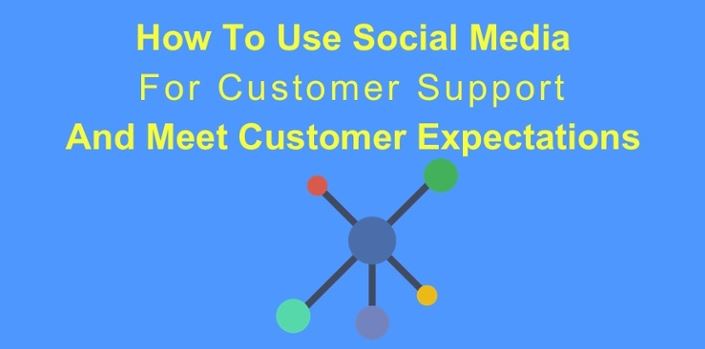
-
10 Mar
-
Using Social Media For Customer Support And Meet Customer Expectations
Did you know that 52% of the time someone sits down at their computer, opens their web browser and visits a webpage, the first page they visit is Facebook?
People spend a huge portion of their day on social media. Likely because businesses immediately took advantage of the plentiful marketing opportunities, the average user now expects customer service options through social media as well. Not only that, they expect the customer service to stay consistent in quality and branding through the other channels your call center offers.
So, it’s not hard to imagine social media as a driving force in brand awareness, but do customers really use it to contact and resolve problems? According to the Nielsen Social Media Report 2012 almost half of consumers do. We can speculate that nearly 5 years later, that percentage continues to grow. As your presence on social media increases, so will your inquiries.
To help you manage standard quality and help your agents handle online queries, we'll share a few tips on how to use social media for customer support in order to meet customer expectations.
Consistency is key
When using social media for customer support, your driving theme should be consistency. From the shop to the call center to Twitter, customer service solutions should be uniform. Leslie Ament, SVP & Principle Analyst of Hypatia Research Group insists that while companies often offer a silo, or top to bottom approach to customer service on social media, customers are looking for consistency across channels.
According to the research group, over 80% of businesses fail to create a omnichannel customer service experience, even though customers insist on it.
Choose your channels wisely
Decide where to focus your resources when using social media for customer support. 83% of Pinterest users are women interested mostly in crafts, food and fashion. While it is unlikely a company that manufactures truck hitches would want to dedicate resources to Pinterest, your fried chicken batter company may be able to cultivate a following and in-turn provide customer support.
Demographic statistics are available from plenty of research groups so take some time to do your research and match the right channels to your customer demographics in order to decide where you need to be present on the web.
Social media sites and apps also make it easy to search for mentions of your business. Once you know where you’re being talked about the most, or where you have the potential to be talked about the most, you’ll know where to dedicate your customer service resources. So, now that you know which channels to integrate as part of your omnichannel strategy, what exactly does this mean for your customer service department and how can you accomplish it?
Answer questions on social media and encourage conversation
Social media is unique because the majority of the interaction and your image is controlled by the customer. According to Conversocial, 88% of customers who don't receive an answer from company in question will not make a purchase from them.
This means that you need to keep the conversation moving and strive to respond to all those that are talking to you and about you.
Follow social media etiquette
Do not erase comments unless they are clearly spam and do not continue conversation with a customer that only wishes to vent. Again, your impression is controlled by the customers and it is easy to lose control of it on social media. The consequences of a dissatisfied consumer in your shop or on the phone are pale in comparison to the effects one dissatisfied customer can have on social media.
Make it easy for your customers
Customers want their inquiries on social media to be a one stop shop. Don’t refer customers to a phone number or website when using social media for customer support. Customers make their inquiry on social media out of convenience and these outlets provide you with all the necessary tools to communicate with the customer that reached out to you.
Asking them to move to a new location to solve their inquiry, unless absolutely necessary, will only frustrate and confuse them.
Respond in a timely manner
It’s also important to remember that, as far as customers are concerned, social media is like live chat. They expect a response almost immediately.
According to a survey by the Oracle, over half of Twitter consumers expect a response under two hours. This is not always an achievable goal, but it suggests that separating out inquiries that may be quickly responded to will help you reach faster response times overall.
Keep tabs on common inquiries
Keep track of what your customers are talking about on and off your social media pages. What problems are they having? What questions keep popping up over and over?
Obviously, the more often and more quickly they get a solution to their problems, the more likely they are to have an overall positive customer service. You may even be able to preemptively solve the problem for them. Providing direct links to solutions of commonly recurring issues will save your staff’s time and please your customers.
Source by: https://blog.playvox.com/how-to-use-social-media-for-customer-support-and-meet-customer-expectations
- 10 Mar, 2019
- 168Solution Public Class
